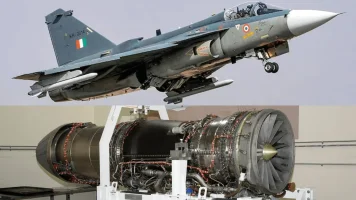- Views: 5K
- Replies: 42

As India and the United States continue to make progress towards finalizing a deal for the local manufacturing of 99 F-414 engines, India’s state-owned Hindustan Aeronautics Limited (HAL) is making significant strides towards establishing a dedicated production facility.
HAL has successfully secured a suitable site for the facility and is currently developing plans to ensure the production of at least two engines per month at peak capacity. The commencement of operations for the new F-414 production line is anticipated in 2028, with an initial production rate of one engine per month. This rate is planned to steadily increase to two engines per month, effectively aligning with the projected production of 24 Tejas MkII fighter jets annually by 2030-31.
The F-414 engine is a vital component of the Tejas MkII fighter jet, and its domestic manufacturing will considerably bolster India’s self-reliance in the realm of defence production. The agreement with GE Aerospace encompasses the transfer of technology (ToT) to HAL, empowering India to produce these advanced engines within its borders.
The Indian Air Force (IAF) has indicated a requirement for approximately 200 Tejas MkII fighter jets by 2039-2040, potentially leading to a subsequent expansion of F-414 engine production. To accommodate this potential increase in demand for Tejas MkII aircraft, HAL has formulated plans to enhance the annual production capacity to 30 units.
The successful conclusion of the F-414 engine manufacturing deal will be a landmark achievement for India's defense industry. It will not only enhance self-sufficiency but also foster the development of high-tech manufacturing capabilities in the country.


